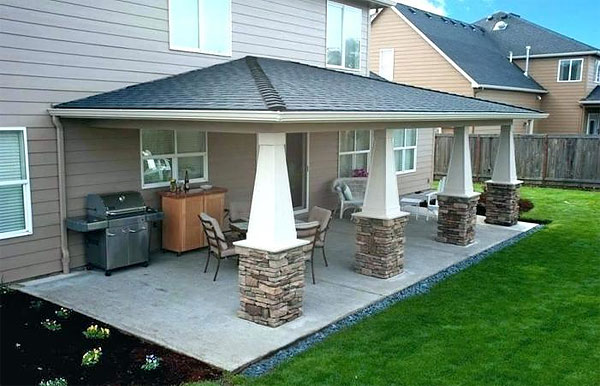
A patio roof is often added to rear of a house after the house is finished. Most of these patio roofs we are called in to stop roof leaks are an extension to the house roof overhang, usually at the roof fascia board. It is easy to understand why they were constructed this way: to cut costs, because the construction is very simple.
So you end up with a flat or a low slope patio roof that doesn't drain rain water very well. Complicating the situation is invariably there will be at least one roof valley leading onto the patio roof, and sometimes a roof edge mounted brick chimney.
First, the transition from slope roof to flat roof needs to have some sort of underlayment that bridges the gap from high to low slope, a robust membrane that can take the slight movements that occur in all frame construction. We use a 36" wide waterproof underlayment to bridge this gap and we use the same underlayment in rebuilding the roof valleys that lead onto the patio roof.
The roof edge mounted brick or wood sided chimney needs to have the proper metal flashing installed to prevent leakage at the chimney site. These are both head and bottom flashings, metal counterflashings and metal stepflashings. All of the above work is then covered up by inserting new roofing shingles into the roof in a seamless fashion.
All that is left is the roofing membrane on the patio roof itself. And using shingles directly over the patio plywood deck is not one of them. A white commercial single ply membrane called TPO is an excellent choice, as long as it is installed by knowledgeable installers. Bear in mind that the white may show from some areas of the yard, which might make it a less attractive choice. You could choose to use shingles instead, but with a waterproof roll membrane adhesive side stuck to the plywood decking as a first course. Then you shouldn't have any leak problems. And the last choice would be Modified Bitumen Roll Membrane installed by hot mopping the membrane to the felting layer with hot asphalt. You need a bigger crew and a hot asphalt kettle for this option, so the cost is more than the other alternatives, but then you are looking at a 20-30 year roof.

161 Old Mill Circle, Lewisville, TX 75057
